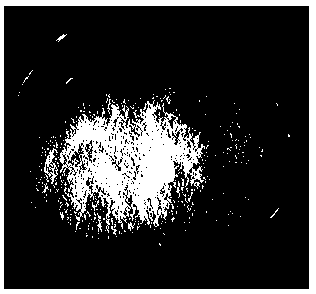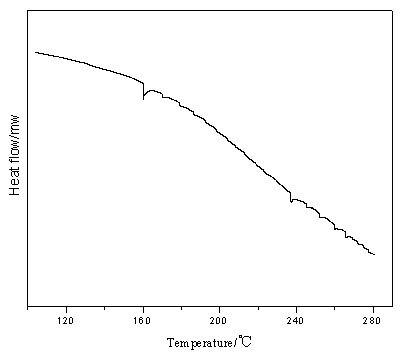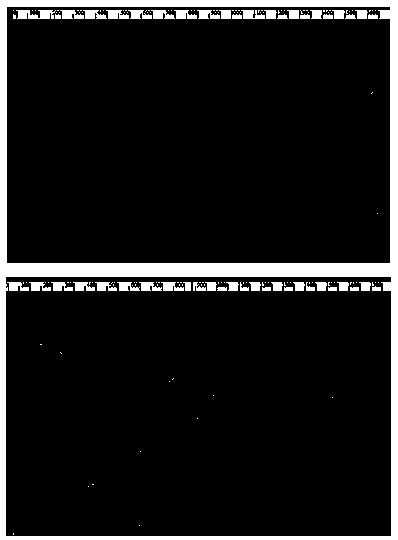Method for preparing granular random/stereoblock polystyrene
A polystyrene and stereoblock technology, which is applied in the field of granular random/stereoblock polystyrene preparation, can solve problems such as low solubility, and achieve the effects of improving processing performance, preventing adhesion and optimizing processing performance.
- Summary
- Abstract
- Description
- Claims
- Application Information
AI Technical Summary
Problems solved by technology
Method used
Image
Examples
Example Embodiment
[0030] Example 1
[0031] Under the protection of nitrogen, inject 0.10 mmol neodymium octoate, 2.00 mmol diethylaluminum, 0.13 mmol dichlorodiethylsilane and 0.1 ml styrene into an ampoule filled with nitrogen after baking, and then ultrasonically age for 45min at 20℃ . Pour 11.4 ml of styrene and 10 ml of n-hexane into the polymerization bottle, transfer the aged catalyst to the polymerization bottle, and shake and react at 50°C for 8 hours. Add an ethanol solution acidified with hydrochloric acid with a concentration of 5-10% by mass to the polymerization bottle to terminate the polymerization reaction. The reaction product is precipitated and washed with ethanol and dried under vacuum at 40°C to a constant weight to obtain granular random / stereoblock polyphenylene Ethylene was 6.18 g, the monomer conversion rate was 59.5%, and the weight average molecular weight was 4.61×105.
Example Embodiment
[0032] Example 2
[0033] Under the protection of nitrogen, inject 0.14 mmol neodymium isooctanoate, 1.40 mmol triisobutylaluminum, 0.35 mmol methyldichlorosilane and 0.1 ml styrene into an ampoule filled with nitrogen after baking, and then ultrasonically age at 35°C. 60 min. Pour 12.8 ml of styrene and 15 ml of toluene into the polymerization bottle, transfer the aged catalyst to the polymerization bottle, and shake and react at 40°C for 12 h. Add an ethanol solution acidified with hydrochloric acid with a concentration of 5-10% by mass to the polymerization bottle to terminate the polymerization reaction. The reaction product is precipitated and washed with ethanol and dried under vacuum at 40°C to a constant weight to obtain granular random / stereoblock polyphenylene Ethylene 8.89 g, monomer conversion rate 76.2%, weight average molecular weight 8.96×104.
Example Embodiment
[0034] Example 3
[0035] Under the protection of nitrogen, inject 0.16 mmol neodymium neodecanoate, 4.00 mmol diisopropylaluminum chloride, 0.05 mmol propyltrichlorosilane and 0.1 ml styrene into an ampoule filled with nitrogen after baking, at 50°C Ultrasonic aging for 90 min. Pour 7.32 ml of styrene into the polymerization bottle, transfer the aged catalyst to the polymerization bottle, and shake the reaction at 55°C for 18 h. Add an ethanol solution acidified with hydrochloric acid with a concentration of 5-10% by mass to the polymerization bottle to terminate the polymerization reaction. The reaction product is precipitated and washed with ethanol and dried under vacuum at 40 ℃ to a constant weight to obtain 5.73 g granular polystyrene. The monomer is converted. The rate was 85.9%, and the weight average molecular weight was 7.62×104.
PUM
 Login to view more
Login to view more Abstract
Description
Claims
Application Information
 Login to view more
Login to view more - R&D Engineer
- R&D Manager
- IP Professional
- Industry Leading Data Capabilities
- Powerful AI technology
- Patent DNA Extraction
Browse by: Latest US Patents, China's latest patents, Technical Efficacy Thesaurus, Application Domain, Technology Topic.
© 2024 PatSnap. All rights reserved.Legal|Privacy policy|Modern Slavery Act Transparency Statement|Sitemap



